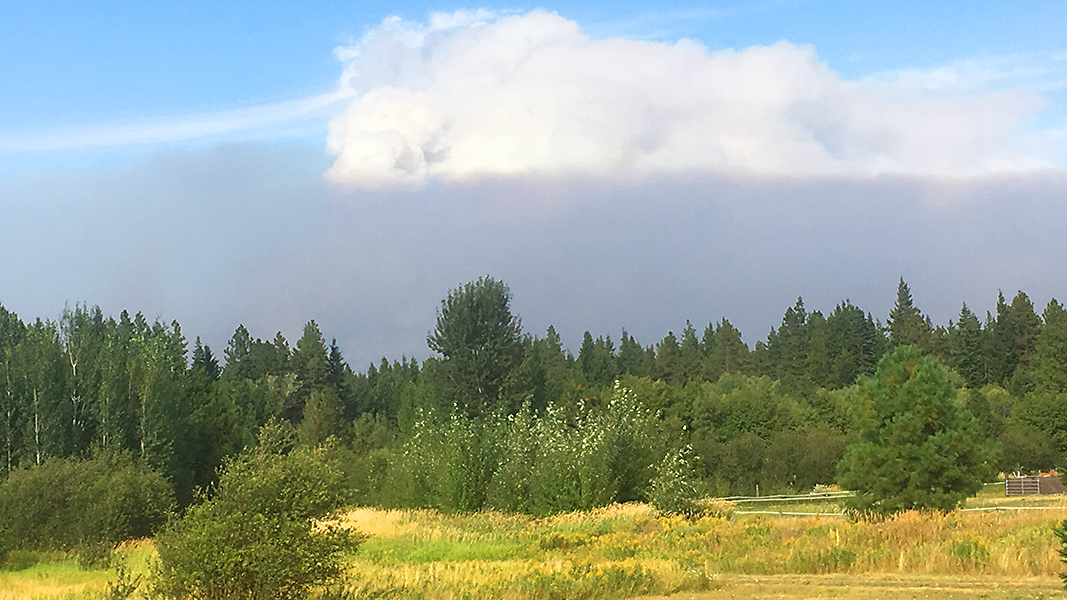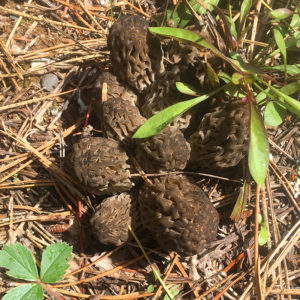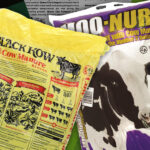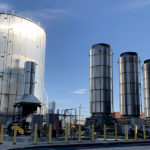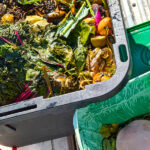
Sally Brown
Editor’s Note: Starting in the winter and into the spring, Dr. Sally Brown authored a 7-part article series discussing how Drawdown, edited by Paul Hawken, ranked compost #60 in the project’s ranking of 80 different ways that carbon dioxide (CO2) from the atmosphere can be drawn down in its concentration. Compost made the list based on taking food scraps from landfills to compost piles, aka methane avoidance. This next series of articles on the impact of wildfires on soils, and how to remediate them, continues, at least indirectly, notes Dr. Brown, the Drawdown series.
This installment of the Drawdown series relates to the reality that we haven’t exactly drawn down enough carbon yet. The fact that the West Coast is on fire is a good indication that we have a ways to go. Looking out my window through the grey haze is proof enough for me. At this point, early in the fire season for California, and hopefully near the end of it for Oregon and Washington (it started raining), we have many millions of acres of burnt ground. This is one of the consequences of climate change, one that all of us on the West Coast know too well these last few years. This fire season has left us all with images of red skies and charred homes. We also see pictures of black toothpicks that used to be forests. Soil is another thing that burns in these blazes and organics can have a role in making sure that soil stays in place and even help to bring it back to life.
The impact that fires have on soil varies based on the severity of the blaze. Slash and burn agriculture is an age-old technique to restore (albeit temporarily) fertility to old and tired soils. Burning releases the mineral nutrients in the standing biomass and even can make some of the nutrients in the soil more available. This flush of fertility lasts only a little longer than botox — good for one growing season and then the soils end up older and more tired than before. Nowadays more and more communities are proactively clearing and thinning, reducing the potential for high intensity fires.
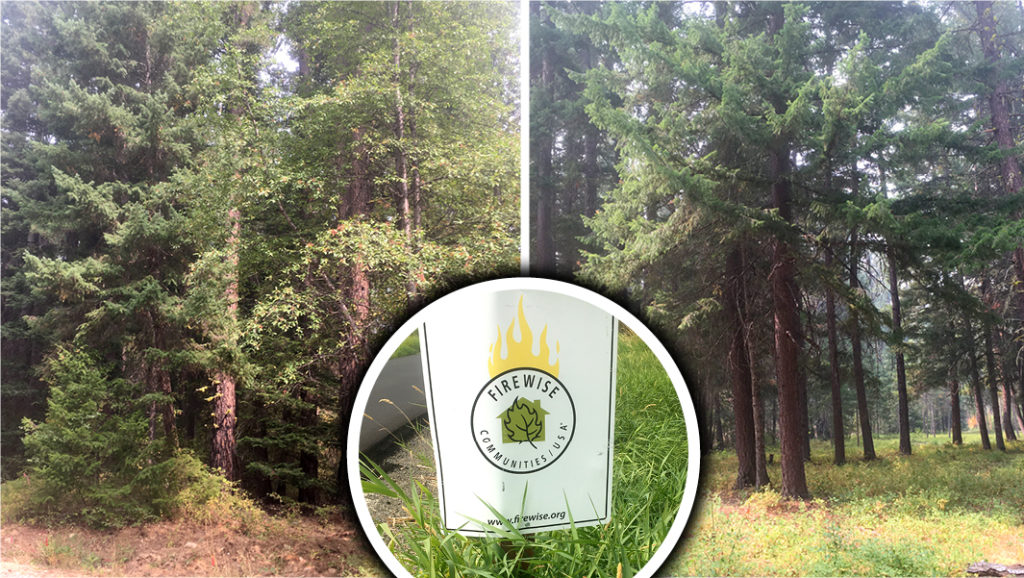
A site that has not been thinned out (left) and one that has been thinned (right). Neighborhood sign denotes fire control program (inset).
In forests, controlled burns are an effective way to reduce the fuel for uncontrolled burns. Prescribed burns have been shown to improve both soils and the trees that grow in them. One study of deliberate blazes in the Midwest found that the controlled fires resulted in soil with higher moisture and available nutrients. The sites were more open with a greater diversity in understory plants (Scharenbroch et al., 2012). However, controlled burns in the west seem like some far off fantasy as fires rage out of control.
If a fire does happen and it is high intensity, the soil will also show the scars. The organic matter horizon or “O” layer in the forest will be gone. The exposed subsoil will be enriched by carbon — the good to barbecue steaks kind (aka charcoal). Heating will also increase the concentration of aromatic hydrocarbons and graphite, turning active organic matter into polyaromatic hydrocarbons (PAHs). The extent of organic matter loss and transformation will depend on the intensity and duration of the burn. In high intensity fires, the soil can heat up to 850°C. If the fire is quick, these impacts are limited to the top inch of mineral soil. The longer the duration of the fire, the deeper the impacts.
Soil Erosion Exposure
Over time fire ravaged soils will recover. Over time a good burn can be a good thing. Speaking from personal experience, the spring after a burn is the best time to go forage for morel mushrooms. But it’s not always easy to focus on the bright side, particularly when the scars are still smoldering. An immediate and very negative impact of forest fires can be the susceptibility of those charred soils to erosion when the rains do come. Reduced permeability and the removal of the vegetation that helped slow the speed of the raindrops can lead to catastrophic erosion events. If the remaining soils erode, that takes away your potential for mushrooms and adds centuries to the recovery time. It also adds insult to injury as those slides can damage homes and properties at the base of the slopes.
Severity of the burn, erosive potential of the soils, and control measures are things that the U.S. Forest Service (USFS) takes a look at after a blaze. The Jolly Mountain fire happened close to my home a few years back. I think that it is a great example because I still remember seeing those hillsides on fire at night. I still see the burn scars on the way to my favorite hiking trails. These days one fire is as good an example of another so let me use this one. I found detailed information including site assessments of this fire online (will likely be true for a fire near you). I am including all of the acronyms so that when you step up to offer compost for these sites, you’ll know the terms to use and the documents to look for.
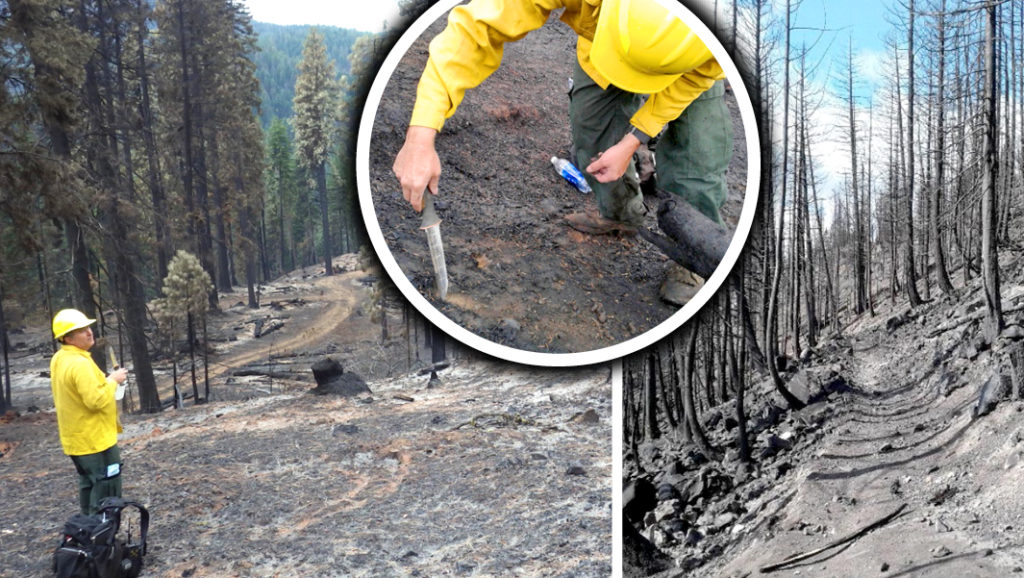
BAER assessment team conducts field study at site of the Jolly Mountain fire. Source: U.S. Forest Service
The USFS partnered with Central Washington Fire Recovery to do a Burned Area Emergency Response (BAER). If you look at the BAER assessment for the Jolly Mountain fire you’ll find a basic description of the growth and timing of the blaze. Then there is an analysis of the physical characteristics of the landscape including the dominant soil series. In this case the soil texture is evaluated for its erosive potential. For this fire site, 45 miles of trails and 173 miles of road provide access (ways to apply compost).
The Remote Sensing Application Center of the USFS provided a Burned Area Reflectance Classification (BARC) map. The BAER team assessment quantified the total acreage burned as well as the portion on USFS lands, state-owned lands and private lands (who to contact to apply the compost). For the Jolly Mountain fire, 18% of the burned land “exhibited strong water repellent conditions.” The report even quantifies the erosion potential at 9 tons/acre. It also includes an evaluation of different portions of the burn area where different “critical value at risk” categories are described with a description of the threat, magnitude of the risk and treatments/management actions applied. Soil productivity, hydrologic function and riparian function are included in the critical values at risk list. Remedies listed include installation of drainage treatments and natural recovery of effective groundcover.
We can do better than this. Part II of this series reports on findings from several research trials using recycled organics to repair fire-ravaged soils.
Sally Brown, BioCycle’s Senior Adviser, is a Research Professor in the College of the Environment at the University of Washington.


